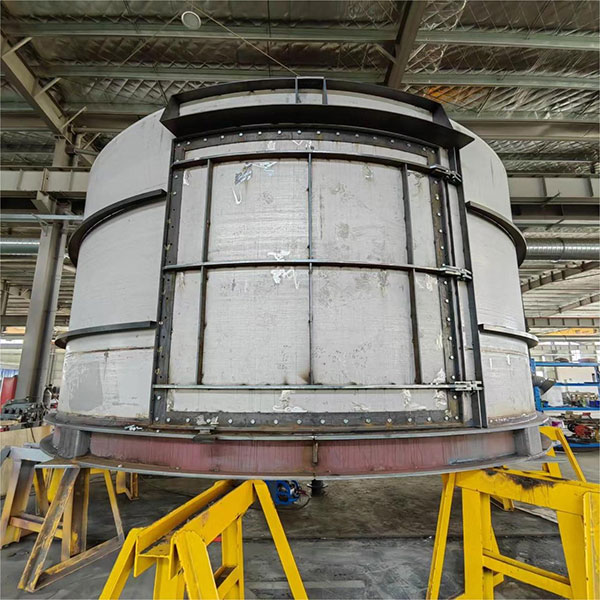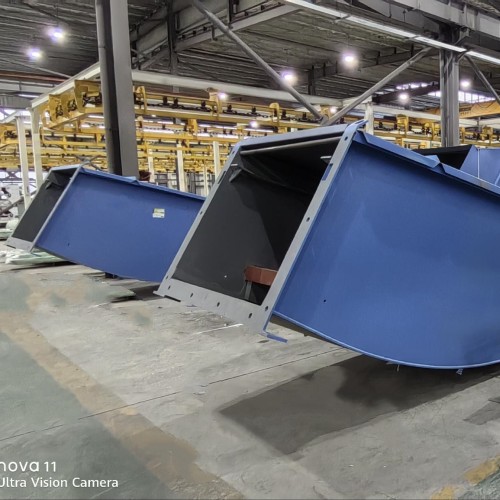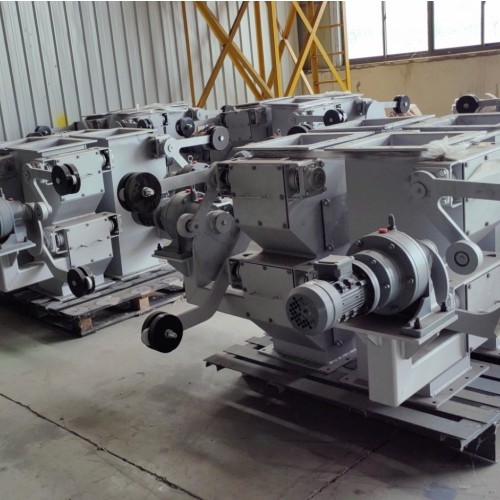
Sludge Holding Tanks in Wastewater Treatment – O&M Solutions
Lime Sludge Holding Tank
A Lime Sludge Holding Tank is designed to store and manage lime sludge, typically a byproduct of processes involving lime, such as water treatment, flue gas desulfurization (FGD), or chemical manufacturing. These tanks are engineered to handle the unique challenges of lime sludge, which can be abrasive, viscous, and prone to settling.
Key Features of a Lime Sludge Holding Tank
- Material of Construction:
- Typically constructed from mild steel, stainless steel, or reinforced concrete, depending on the application and the corrosive properties of the sludge.
- Corrosion-resistant coatings (e.g., epoxy lining) are often applied to protect against the high alkalinity of lime sludge.
- Agitation System:
- Equipped with mixers or agitators to keep the sludge in suspension and prevent settling.
- Mixing systems may include mechanical agitators or recirculation pumps.
- Sludge Handling:
- Inlet and Outlet Ports:
- Designed to minimize blockages and ensure smooth flow.
- Sloped bottoms or cone-shaped designs to aid in complete discharge of sludge.
- Drain valves for periodic cleaning and maintenance.
- Inlet and Outlet Ports:
- Level Control:
- Includes level sensors or gauges to monitor the tank’s capacity and avoid overflow.
- Ventilation System:
- Venting is essential to release gases and prevent pressure buildup.
- Capacity:
- Custom-sized to meet the storage requirements of the plant.
Applications
- Water and Wastewater Treatment:
- Storing lime sludge generated from lime softening or pH adjustment processes.
- Flue Gas Desulfurization (FGD):
- Holds lime sludge produced during the removal of sulfur dioxide (SO₂) from flue gases in power plants.
- Chemical Manufacturing:
- Temporary storage of lime-based byproducts or slurries during chemical processing.
- Cement and Mining:
- Used in processes where lime is utilized, such as neutralizing acidic waste streams.
Design Considerations
- Sludge Properties:
- Consider sludge density, abrasiveness, and tendency to settle.
- Mixing Requirements:
- Agitators or recirculation systems should be adequately sized to maintain uniform suspension.
- Temperature and Environment:
- Tanks exposed to outdoor environments may require insulation or heating systems to prevent freezing or temperature fluctuations.
- Corrosion Resistance:
- Select materials or coatings resistant to the high pH of lime sludge.
- Discharge Efficiency:
- Ensure that tank geometry and outlet positioning allow complete removal of sludge to prevent buildup.
Maintenance Tips
- Periodic Cleaning:
- Schedule cleaning to remove hardened lime or sludge buildup at the bottom of the tank.
- Inspect Linings:
- Regularly check for corrosion or damage to internal coatings.
- Agitator Maintenance:
- Lubricate and inspect agitators or pumps for wear and tear.
- Monitor Sensors:
- Ensure level sensors and flow meters are functioning accurately.
Advantages
- Prevents settling and hardening of lime sludge.
- Simplifies downstream processing and handling of sludge.
- Durable design reduces maintenance costs and extends operational life.
Write your message here and send it to us














